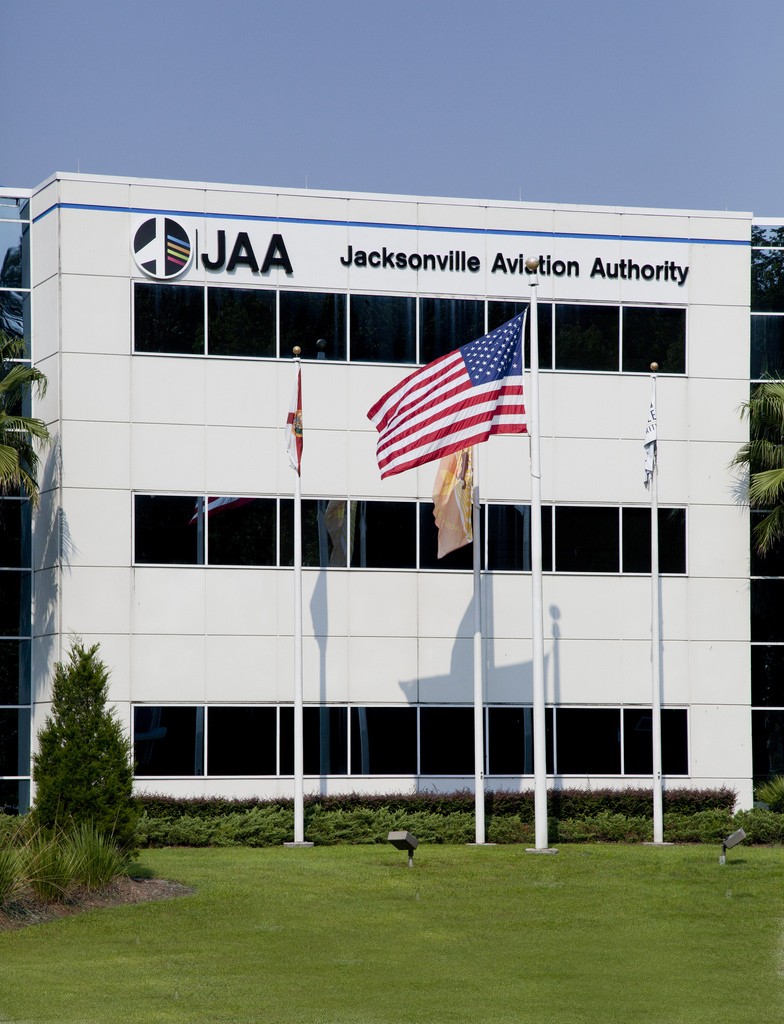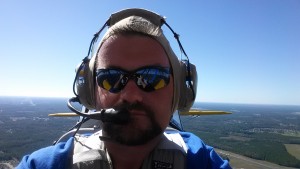
Nearly every generation has “one event” which not only left unforgettable memories of where people were and what they were doing when it happened, but was a pivotal time in our collective history. September 11, 2001, is that event for our generation.
Fifteen years ago, our nation suffered an inconceivable horror on our own front doorstep. The consequences of those events will have lasting impact on not only our generation, but generations to come.
We sat down with several current and former Jacksonville Aviation Authority (JAA) employees who worked at one of our four airports on that fateful day, and will post their stories throughout this week.
Here’s how September 11, 2001, is remembered, in their own words.

Bryan Spink, a Ramp Service Technician at Herlong Recreational Airport, was on duty at the main terminal front desk on the morning of September 11th. A pilot who hangared his plane at the airport called from home and told him that an airliner had just flown into one of the Twin Towers. Like millions of other Americans that fateful morning, Spink flipped on the nearest TV and watched events unfold with others who happened to be nearby.
“We figured it had to be because of bad weather,” Spink explained. Like many at Herlong, he was a private pilot – and knowing the unlikelihood of what he had just heard, figured the first crash was due to a freak accident in a low visibility situation. But when they turned on the TV to the image of the smoking tower, “it was a beautiful, clear blue sky. It wasn’t very long after we started watching that the second plane came in and hit. And that’s when we all realized, OK, that wasn’t an accident. We are under attack.”
Herlong is unique among the Aviation Authority’s airports in that there is no air traffic control tower; pilots flying in the airport traffic pattern monitor a common radio frequency and periodically announce their position and intentions. Ramp Service Technicians listen in on the frequency and occasionally speak with the pilots and provide advisories. The announcement Spink made that morning still stays clear in his memory to this day.
Less than an hour after the second tower was hit, a man from JAX TRACON, the regional air traffic control located in the building below Jacksonville International Airport’s tower, called Herlong’s front desk and told Spink, “You need to call everyone on your frequency and get them on the ground right now.”
Since the Herlong staff knew and was friendly with the TRACON staff, Spink asked if the man was joking.
“No,” the air traffic controller replied, “as you know, there’s something going on and the President of the United States has just given the order – we’re closing down the National Airspace System. There are still two aircraft unaccounted for, and I don’t think they’re done yet. I have to go,” and abruptly hung up the phone.
There were three aircraft in Herlong’s traffic pattern at the time, all training flights. “I got on the radio and…what are you supposed to say?” recalls Spink. “You’re not telling someone there’s wildlife on the runway or some other basic airport advisory, so I remember just trying to keep it as short as I could. I said, ‘Attention all traffic in the pattern at Herlong. The President of the United States has ordered all airspace closed and all aircraft have been ordered to land.’ He continued, “As many as four airliners have been hijacked, and two of them were just flown into the World Trade Center. So they are shutting everything down.” All the aircraft landed in an orderly fashion, and shortly thereafter Spink and the rest of the people at Herlong watched footage appear of the Pentagon in flames.
He describes the next hours as an unrelenting stream of phone calls from law enforcement and government agencies. Herlong staff immediately began securing the airport, locking buildings and gates and funneling any visitors to the airport into one entry point. Airplane owners whose planes were located at the airport called constantly asking for updates, and Spink and his coworkers continually had to communicate the news: you can’t fly.
“I can’t tell you how many calls we got, that day and the next several days, saying if anyone takes off, they’re going to be intercepted and possibly shot down,” he remembers. “That’s what we were being told by the FAA, even getting calls from the military saying, ‘Just to remind you, no civilian traffic is allowed to depart. If anyone takes off, they’re going to be intercepted.’ That lasted for the better part of a week before we were actually able to start launching flights again.”
The empty sky that afternoon and for nearly a week after was a phenomenon that impacted the memories of many Americans.
“It was surreal,” Spink says. “I remember I got up the next morning and came to work, and that’s probably the most eerie I’ve ever felt here, because it was dead quiet. Everything’s tied down, there was not a contrail in the sky, there wasn’t a single radio call…nothing.”
Looking at the flight tracking software that Herlong staff used at the time was equally uncanny. On the 11th, he could see the airspace clearing out and aircraft funneling into the commercial airports. Thereafter, Herlong staff would get on the computer and “the entire lower 48 states was a blank map” for the rest of the time that the flight ban was in effect.
“You knew so very little after the initial couple of hours, after things stopped happening,” Spink says. “But you knew this was going to be big. You wondered how long this was going to last. What else was going to happen? It was totally unprecedented; obviously, nothing like this had ever happened before.”
“We began to wonder, Are they going to let general aviation fly again? What are they going to do with the airlines? You knew something was going to happen, you just didn’t know what.”
Perceptions of airports and general aviation were forever transformed. Spink recalls that actions previously considered harmless were subsequently viewed with suspicion, things like wanting to go out onto the airport ramp to look at airplanes, or someone showing up with a camera to take pictures. Everything was viewed with a wary eye.
“For the longest time, you’d look at a small airplane at Herlong and think, OK, we can go up in it and have some fun. Now you stop and look at that same airplane and are forced to think, how could this possibly be used as a weapon?”
Spink summarized that momentous day with the ultimate understatement: “It changed everything.”
